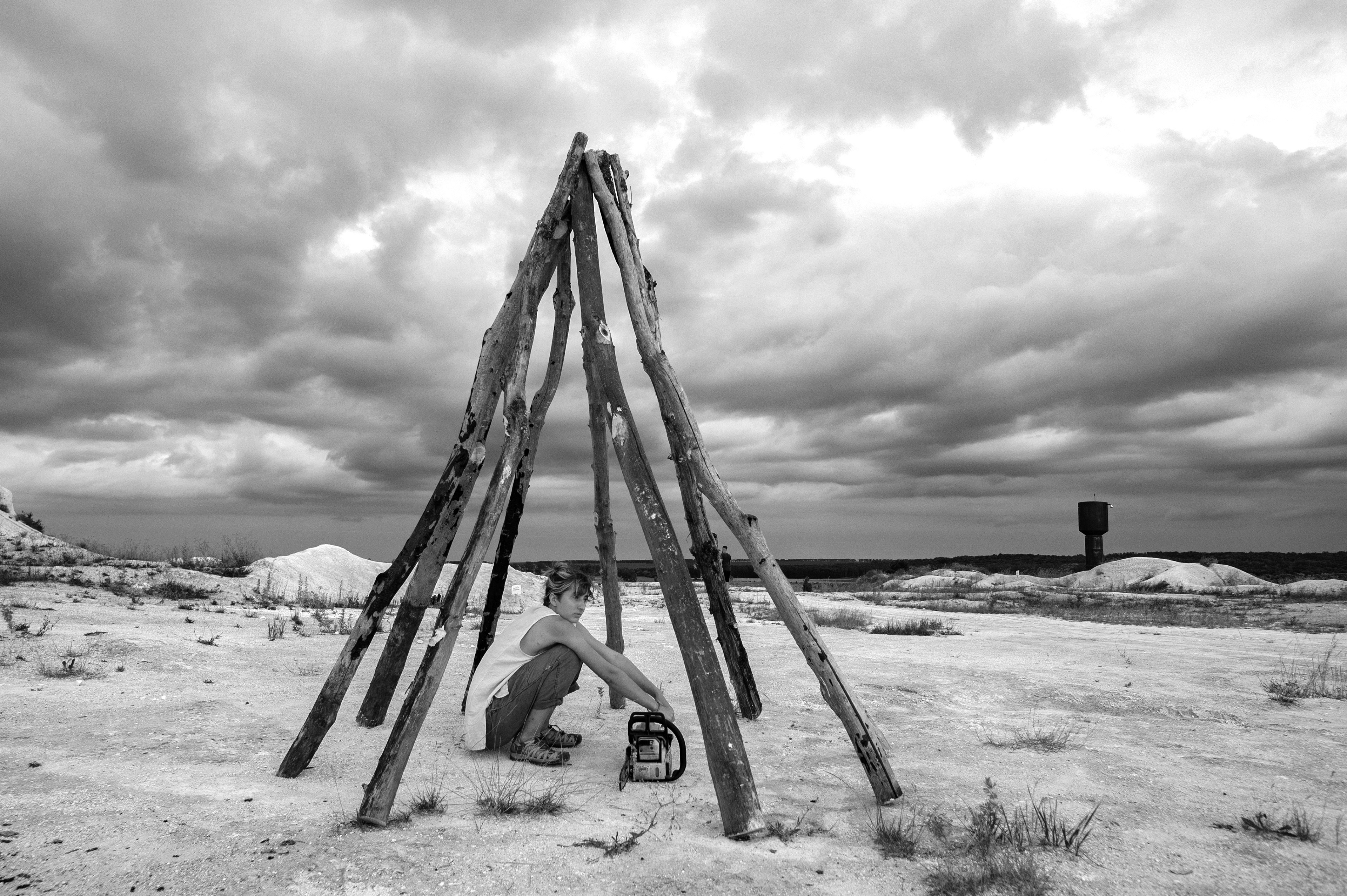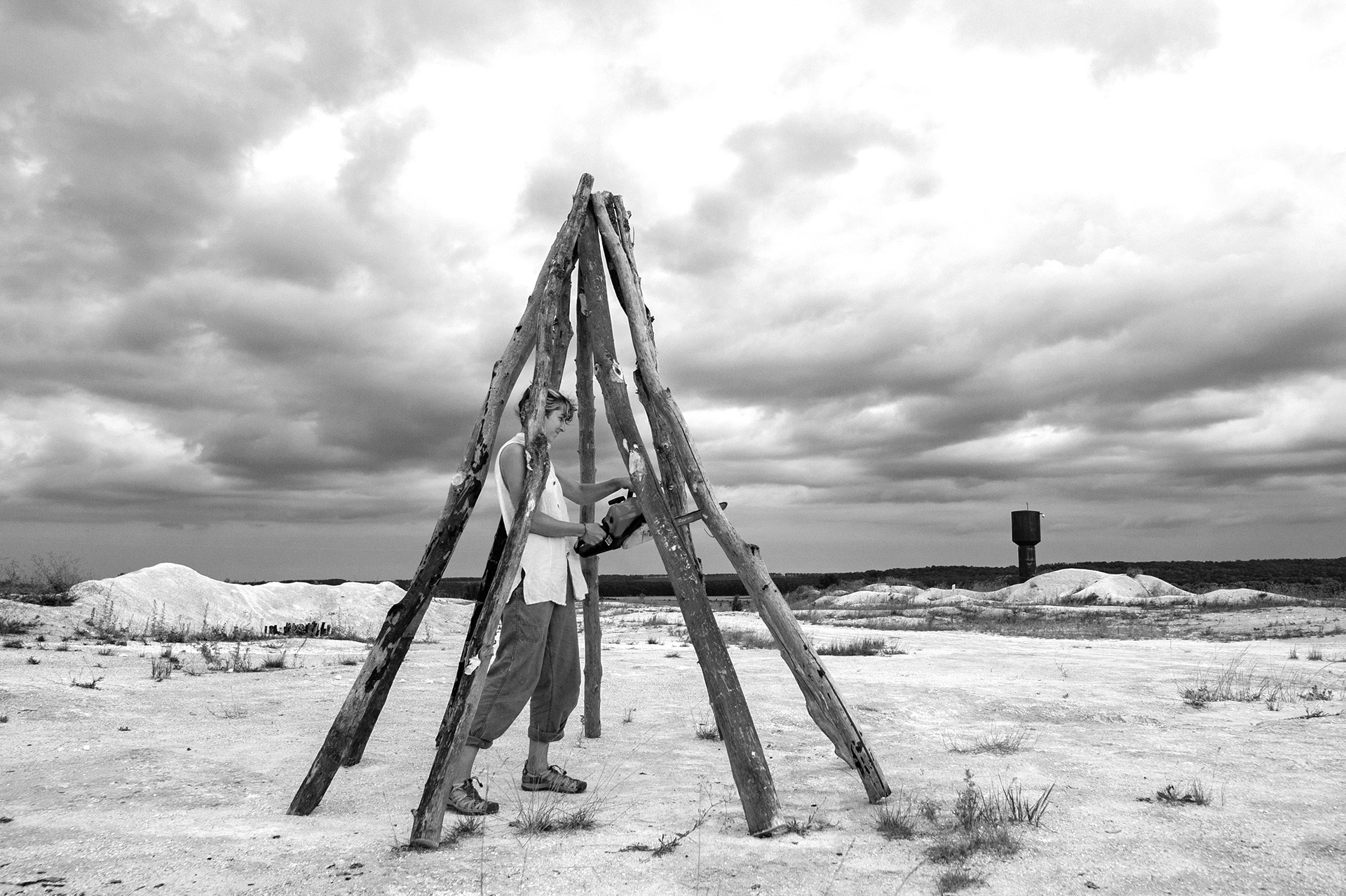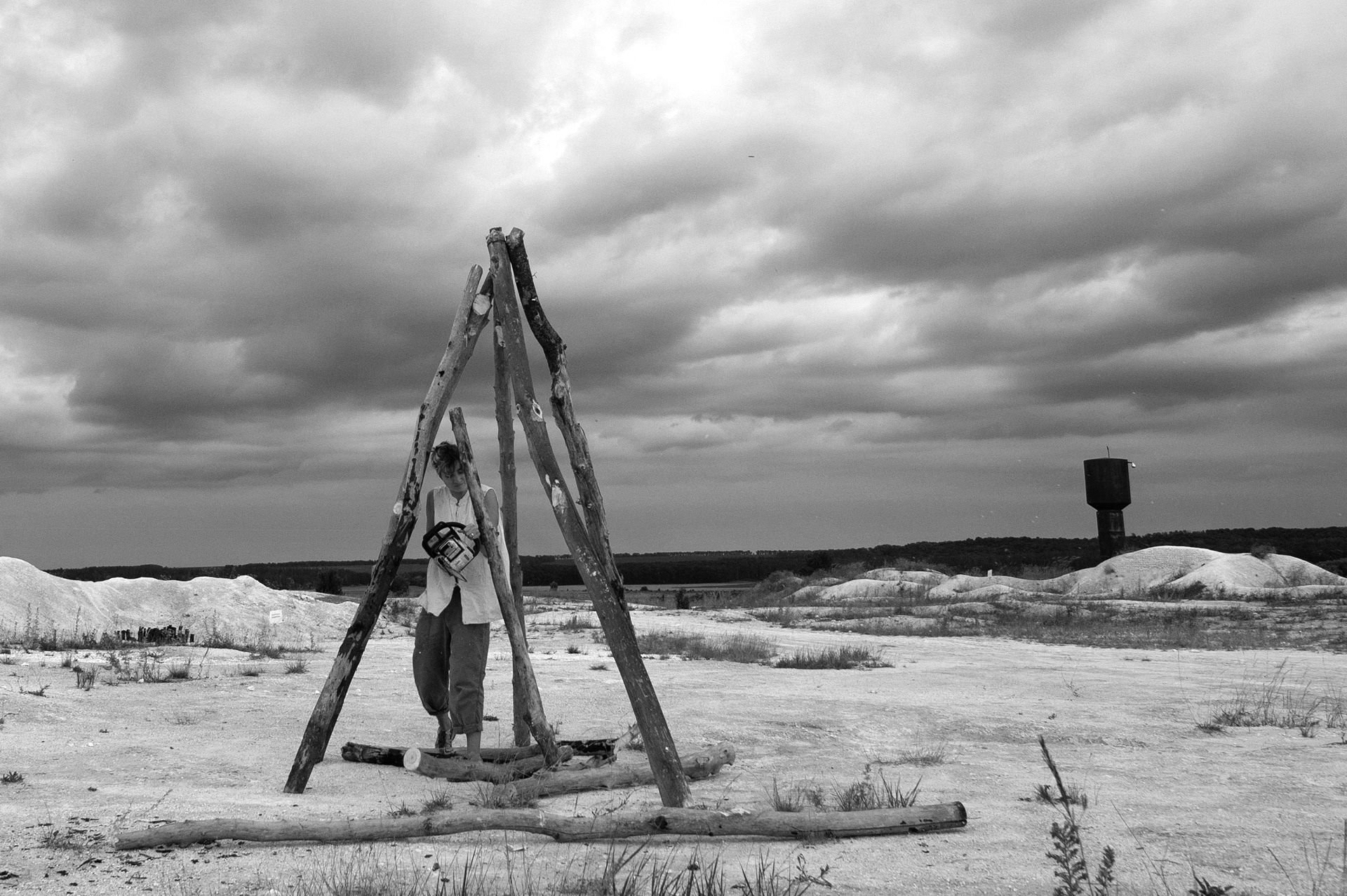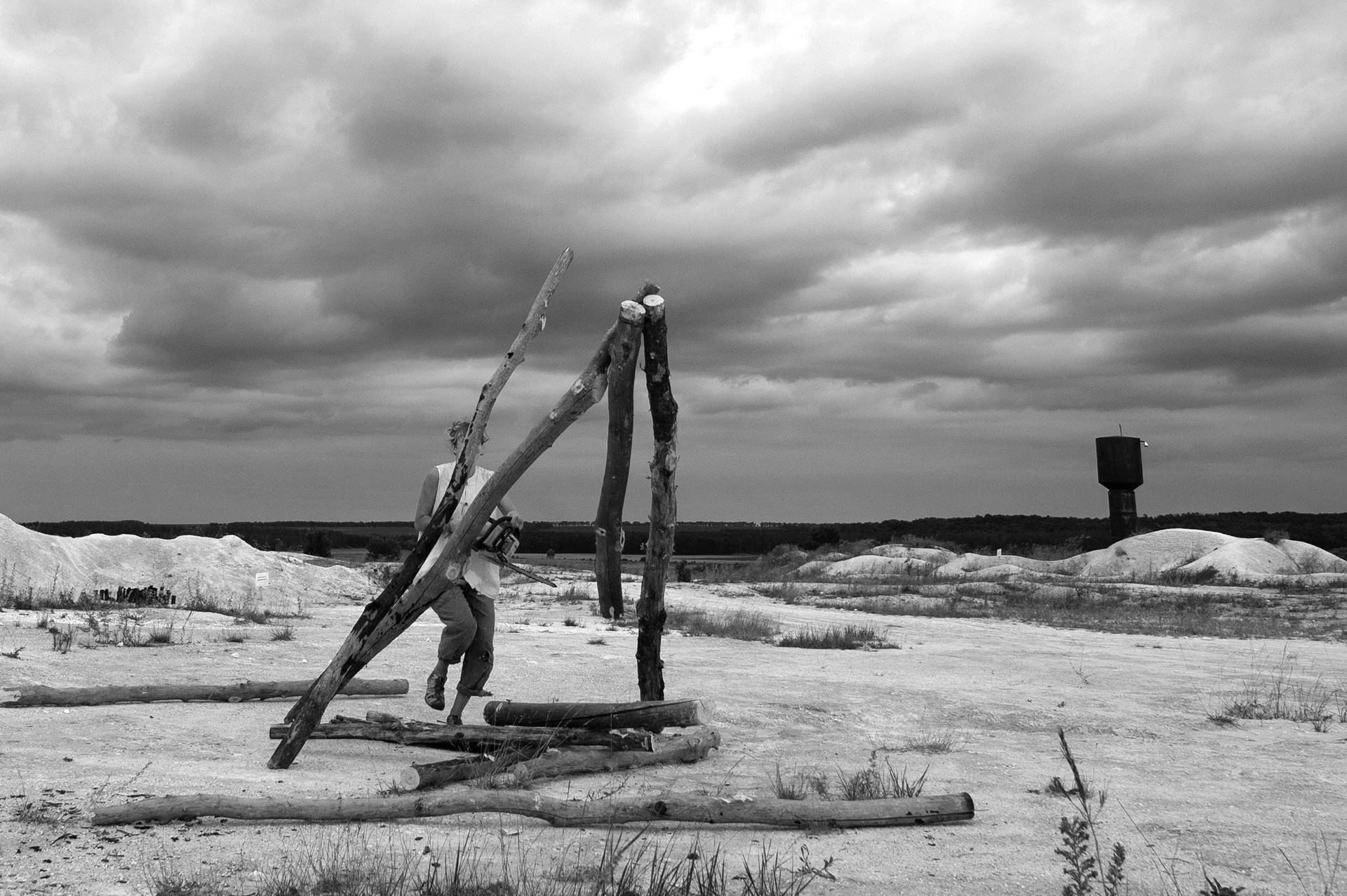Перформанс «Please, (don`t) come in» був натхненний роботою японського художника-абстракціоніста Кадзуо Сіраги (Kazuo Shiraga) з назвою „Please, come in“ (1955) . У оригінальній варіації перформансу Кадзуо Сірага вибудував дерев’яну тривімірну дерев’яну конструкцію з дерев’яних стовпів, на кожному з яких топором зробив надрубки, не ламаючи їх. Увесь процес створення був задокументовний фотографіями, та визначається мистецтвознавцями як один з перших публічних перформансів японського мистецтва.
У межах свого перформансу «Please, (don`t) come in», художниця, стоячи усередені конструкції, за допомогою бензопили не лише залишає надрубки на дереві, але повністю перерубує дерево та опиняється у ситуації потенційної, власноруч створеної, небезпеки. Ця дія слугує алегорією до ситуації, коли людина несвідомо опиняється у середовищі нестабільного психологічного стану, і усі намагання виправити ситуацію несуть за собою хвилю руйнувань яка неспинно валиться на неї. Ідею можна також перенести на суспільний простір, коли громада свідомо чи несвідомо руйнує сталі «конструкції» з розумінням, що «уламки» неминуче розлетяться у сторони, і змінять навколишній устрій.
The performance “Please, (don't) come in” was inspired by the work of the Japanese abstract artist Kazuo Shiraga called “Please, come in” (1955). In the original variation of the performance, Kazuo Shiraga built a three-dimensional wooden structure out of wooden poles, each of which he made notches with an ax without breaking them. The entire creation process was documented by photographs, and it is defined by art critics as one of the first public performances of Japanese art.
Within the framework of her performance “Please, (don't) come in”, the artist, standing in the middle of the structure, uses a chainsaw not only to leave notches on the tree, but to completely cut it down and to find herself in a situation of potential, self-created, danger.
This action serves as an allegory for the situation when a person unknowingly finds themself in the midst of an unstable psychological state, and all efforts to make the situation better bring with them a wave of destruction that ceaselessly falls on him. The idea can also be transferred to the public space, when the community consciously or unconsciously destroys permanent structures with the understanding that the “debris” will inevitably fly to the sides and change the familiar environment.



